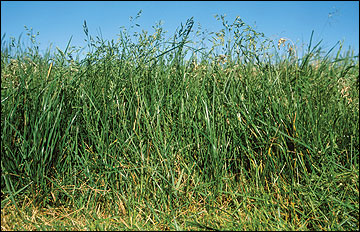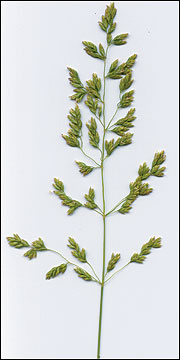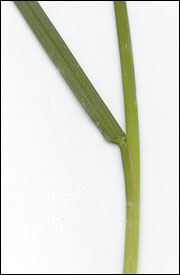Kentucky bluegrass (Poa pratensis L.)
Cool-season grasses
Thirty years ago, Kentucky bluegrass was the predominant cool-season grass in northern Missouri. Although it is not as popular as it once was, Kentucky bluegrass is still part of many grazing systems. It is often found in weaker stands of other cool-season grasses because it has rhizomes and tends to fill in where other plants have died. Kentucky bluegrass makes most of its growth in spring and is palatable to cattle. Although it tolerates frequent grazing or clipping, cattle often overgraze Kentucky bluegrass pastures. Ideally, it should not be grazed closer than 2 or 3 inches. Kentucky bluegrass does not tolerate hot weather and as a result is unproductive in midsummer. In addition, it becomes dormant during dry weather, although plants often recover after severe droughts.
 Annual ryegrass
Annual ryegrass
 Yield distribution of annual Kentucky in Missouri.
Yield distribution of annual Kentucky in Missouri.
- Origin: Europe
- Adaptation to Missouri: Best adapted to the northern half of the state
- Growth habit: Rhizomatous, sod-forming, perennial.
- Growth habit: Nearly sod-forming annual bunchgrass.
- Blade: Folded in bud, V-shaped, keeled, parallel sided, narrows to boat-shaped tip, margins smooth to slightly scabrous, lower side dull.
- Sheath: Compressed, smooth, closed when young, later split, glabrous.
- Ligule: Truncate, membranous, about 1/30 inch long in lower leaves, longer in upper leaves.
- Auricles: Absent.
- Seed head: Panicle open, pyramid shaped.
- Fertilization: 40 to 60 lb N/acre in late February or early March; phosphorus and potassium to soil test.
- Timing of production: 75 percent of growth before June 15.
- When to begin grazing: When the grass is 6 to 8 inches high.
- When to cut for hay: Early boot stage.
- Lowest cutting or grazing height: 2 to 3 inches
- Fall management: Light grazing possible in September and October. Leave a 4-inch stubble for winter.

